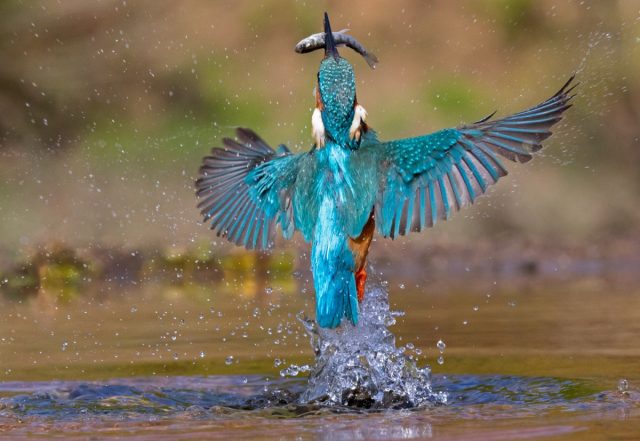
There are many different species of kingfisher, and those that eat fish hunt by repeatedly diving head-first into the water when they spot tasty prey without suffering brain injuries like concussions. It turns out that diving kingfishers have several modified genes associated with diet and brain structure, according to a new paper published in the journal Communications Biology—notably mutations in genes related to the tau proteins that help stabilize neuron structure, although they can be harmful if too many build up.
“I learned a lot about tau proteins when I was the concussion manager of my son’s hockey team,” said co-author Shannon Hackett, associate curator of birds at the Field Museum. “I started to wonder, why don’t kingfishers die because their brains turn to mush? There’s gotta be something they're doing that protects them from the negative influences of repeatedly landing on their heads on the water’s surface.”
It's not the first time scientists have pondered this question, not just for kingfishers, but for other birds like gannets and woodpeckers. For instance, physicists at Virginia Tech studied diving gannets back in 2014 (publishing their conclusions in 2016), which fold their wings back as they dive, hitting the water with their whole body to snag underwater prey. From a physics standpoint, we're talking about an elastic body hitting the surface of water as fast as 55 MPH. The stress of moving from the medium of air to the much denser medium of water exerts a huge force on the bird's body, with an impact akin to tornadoes hitting the water. Yet despite the stress on their bodies, gannets (like the kingfisher) manage the feat again and again without injury, especially concussions.
So Sunny Jung and his team snagged a deceased gannet from the Smithsonian's Natural History Museum and froze it, then dropped the bird repeatedly into tanks of water while capturing the process with high-speed cameras. (The unfrozen body was just too floppy to be used in the experiments.) They also made 3D-printed models of gannets based on CT scans of their specimen and repeated the experiments, which enabled them to vary different characteristics.

They found that the second stage of the diving trajectory was the danger zone for a diving bird—when the head is fully immersed in the water but the body is still in the air—because it produces a very strong compressive force on the neck. Gannets have very long necks (half their body length), which can buckle easily if the birds dive faster than a certain speed; gannets have figured out the speedy sweet spot for safety. They get added protection from the pointy shape of their beaks, reducing the force on the body.
reader comments
35